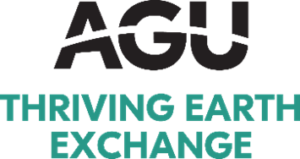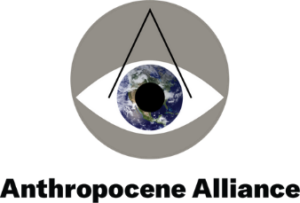Apply now to join our next cohort of Community Science Fellows and Community Leads!

The decision taken by the Greenville city and county council to tear down a historic African American school in the New Washington Heights and to allot that land to the construction of a bus maintenance facility, without consent of locals, have led to significant worries of air, water and noise pollution and an environment of distrust in the local government and the official environmental impact assessment. We seek to engage expert scientific opinion(s) to conduct a thorough review of the official assessment, and to initiate new impact assessment studies, if necessary. The goal is to have an independent estimate of environmental risk to the community, which may or may not differ from official estimates. This is both intended to engage the local community in a community science initiative and to empower them with tools that may facilitate greater leverage in negotiations with the local administration.
This Thriving Earth Exchange Project pertains to the New Washington Heights (NWH), a small community of approximately 1400 people (predominantly African American and Hispanic), who fall under the jurisdiction of the Greenville County, but lies just outside the Greenville city council limits. NWH lies just north-east of Greenville city, is moderately industrialized and has low vegetation and narrow streets. A 27-acre property (that used to be the site of a historic African American school, which was razed in 2015) was requested by the county council for rezoning and development into a green space for the community back in 2012. However, without proper communication and without the consent of locals (ads appeared in newspapers that the locals did not receive, whereas some meetings were virtual when many in the community lack internet service), the county council subsequently handed over a $1.2 million contract to the Greenlink Transit Authority (GTA) for the construction of a 60000-square-foot bus maintenance facility in the same 27-acre property (allowing them to be awarded a further $12 million federal grant). The manner of the land handover, coupled with the general tendency of the local government authorities to break promises made to the community (for example, between 2012-2018, locals were promised a park) has made them wary of the proposed plans, along with fears of environmental degradation, pollution, and generally poorer living conditions than earlier. All of these have led to a general air of mistrust in local authorities’ plans, which extends to any impact assessments that they have conducted.
The property where the proposed facility will soon be constructed (construction is expected to commence over the next few months itself) stands on elevated ground, from which waterflow runoff streams out to a nearby creek, that the community is very passionate about protecting. The creek swells 4 feet during heavy rains, which coupled with industrial runoff (detergents/cleaning chemicals) and a possibility of pollution from old septic tanks in the old community, poses a hazardous situation for water pollution. Although GTA has ensured steps to curb pollutants in runoff, this has not led to mitigation of fears in the community members. Furthermore, although GTA has promised fully electrical buses in their fleet, there is no fixed timeframe for that shift. Currently only 2-3 buses are electric, but the entire operation will involve 80-100 buses, with an overwhelming majority of these vehicles running on fossil fuels. These has also led to fears of significant air pollution and poor air quality in the community. Although environmental impact assessment conducted by the GTA purports that the facility will not increase air pollution significantly, such findings are looked at suspiciously by the community. The Department of Health and Environmental Control (DHEC) had proposed to conduct in-situ surveys of air quality before and after the construction, in order to demonstrate the continued pristine nature of air quality, however the community disputes that such a survey will provide them with any advantage in any negotiations with authority, once the construction is fully operational. Moreover, as the new facility will be ferrying 90 buses on an hourly to daily basis, it will employ a host of people, whose traffic along with the buses being moved, will also mean significant stress to the narrow and underdeveloped roads in the area, locals believe. What is even more ironical is that the buses being maintained in the facility will not even benefit the locals, as none of the bus routes (existing or proposed) passes through their community, effectively meaning that they will have to shoulder all the hazards and burdens for a system that will not benefit them with cheap and clean public transportation.
Hence, this Thriving Earth Exchange Project will involve identifying and understanding the risks to water and air quality, predominantly, and also possible sources of noise pollution once the facility becomes active. It shall ask whether the mitigation tactics proposed by the GTA (which can be found in the public domain) are sufficient to keep pollution in check. The project will begin with a review of the official GTA Environmental Impact Assessment (EIA) that can be found online here. We shall allow standard scientific techniques to guide us into agreement/disagreement with the official assessment, but if the official assessments are found to be flawed (and we find evidence of significant pollution risk to the local community), we might embark on fresh assessment studies to better understand the risk. These endeavors shall be undertaken with the outlook of empowering NWH locals to have more leverage in their demands to the local authorities, and as such, they will be encouraged to be a part of the community science process every step of the way, and the results of the analyses will be communicated to the members of the community through community word-of-mouth and through local media.
The workflow of the project is expected to follow the particular trajectory:
The two resulting documents – one for general audiences and another for media and elected officials – shall give the NWH community an independent scientific study to either placate or validate their concerns with the new GTA bus facility. If there is indeed found to be significant increases to pollution levels, it is hoped that the findings of the analysis will give the community leverage in future dealings with city or county council. We expect this to empower the NWH community towards True Public Engagement. Depending on the results, they may take up specific grievances with the Planning Department or the Sewage Department or maybe, even the DHEC/EPA. However, such decisions will be solely at the discretion of the community members, and our role in such decisions will be purely consultative.
It is also the high hope of the Community Leader(s) that this endeavor will further invigorate and encourage historically African American communities in the greater Spartanburg-Greenville area and in other parts of SC to get involved in community science to tackle their community concerns. NWH community project with AGU Thriving Earth Exchange can become a benchmark case study for other communities in active scientific engagement at grassroots level to empower active citizen involvement.
Michael Brown is the Executive Director and Vice-Chairman of the Sustaining Way. With an extensive background in community development, public policy, and law, he also was elected for a number of years in elected government service. Michael is a board member of the South Carolina Food Policy Council, is President of the Spartanburg NAACP and a principal partner in a community energy consulting group. He is an alumnus of the Liberty Fellowship and an Aspen Global Leadership Fellow. As a trained apiarist, he is also involved in food security issues throughout the region of the Carolinas.
Alecia Brewster is the Program Director, and an ex-member of the Board of directors of the Sustaining Way. An innovative professional with over 17 years of experience and a proven track record of success in program management and outreach for mission-oriented organizations, Alecia brings a wealth of knowledge in youth and adult development, program management, and a passion for service to the local community.
Marcus Griswold has 15 years of experience as a facilitator, scientist, planner, and policy analyst working on watershed assessment and restoration, climate change adaptation and science, contaminated sites, environmental justice, and community engagement. He has held positions and provided consulting services for and with local, state, and federal government, academic institutions, and local and international NGOs. On the community side, he has supported dozens of environmental justice organizations and tribes in ensuring their voices are heard in policy decisions by supporting the interpretation of science and policies, understanding community needs, and developing key messages. He also has training in coaching and ecopsychology and supports people in reconnecting to nature and hope in their lives.
Sheela Bearfoot is the Program Manager at Anthropocene Alliance. She’s Chiricahua Apache, and upon graduation with a degree in Genetics and Plant Biology from UC Berkeley in 2016, worked at the Native American Health Center in San Francisco as a diabetes educator and referral coordinator before starting a Master’s in Environmental Health Science at Johns Hopkins, continuing her focus on Indigenous health disparities.
Arka Mitra is a fourth year Atmospheric Science PhD student at the University of Illinois, Urbana-Champaign. His research focuses on the observation and analysis of trends in cloud properties, especially cloud-top heights, from satellites. Although his academic work is primarily esoteric, he is also a firm believer in the United Nation’s Sustainable Development Goals and is passionate about working towards ensuring the availability of tools and knowledge of climate resilience, locally, to underprivileged communities, who are also often the worst affected.
The scientist(s) who are hired at this stage in the mission (“Solve Phase”), will:
Desired skills and qualifications:
Thriving Earth Exchange asks all scientific partners to work with the community to help define a project with concrete local impact to which they can contribute as pro-bono volunteers and collaborators. This work can also position the scientists and communities to seek additional funding, together, for the next stage.
[ezcol_1third] [/ezcol_1third] [ezcol_1third]
[/ezcol_1third] [ezcol_1third] [/ezcol_1third] [ezcol_1third_end]
[/ezcol_1third] [ezcol_1third_end] [/ezcol_1third_end]
[/ezcol_1third_end]
The AGU Thriving Earth Exchange is the tentpole organization, under whose umbrella this community science project will be conducted and will facilitate the framework for the hire of the Project Lead and Scientist(s), who will take part in the project. They will also share technical know-how, legal and monetary assistance, as applicable, to see this project to a meaningful resolution. The Sustaining Way, a 501(c)3 formed in January 2012, is an interfaith non-profit that uses education, collaboration, and advocacy to create sustainable, caring, and equitable communities for current and future generations in the Greenville area. It will act on behalf of the New Washington Heights (NWH) community as part of the project leadership team and serves as the main point of contact for other team members (Project Lead and Scientists) and Thriving Earth Exchange staff. Project design has started with their input, and they take primary responsibility for ensuring the project advances community priorities and reflects community values and perspectives. The Sustaining Way will also provide some monetary assistance (EPA grant) if necessary (not anticipated at the moment) and will take charge to communicate the results of the project to the NWH community. The Anthropocene Alliance is a non-profit that is the nation’s largest coalition of frontline communities fighting for climate and environmental justice and will assist everyone involved with both the technical know-how and network resources required to fulfill the stated goals.
(c) 2024 Thriving Earth Exchange